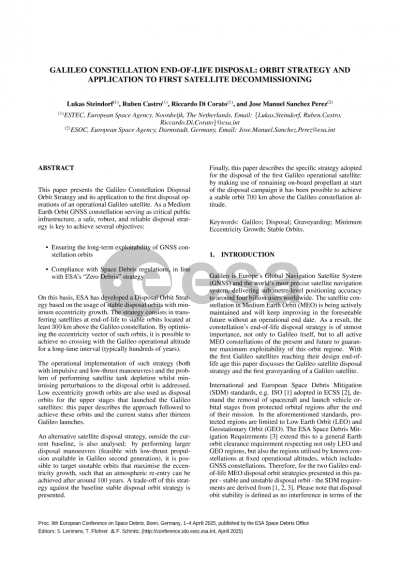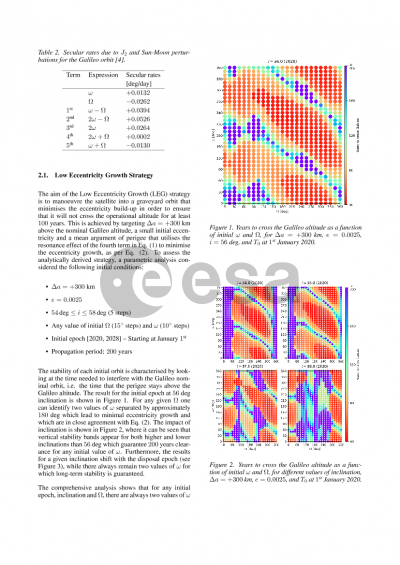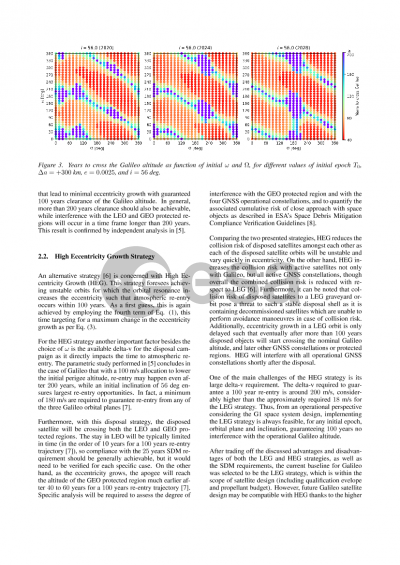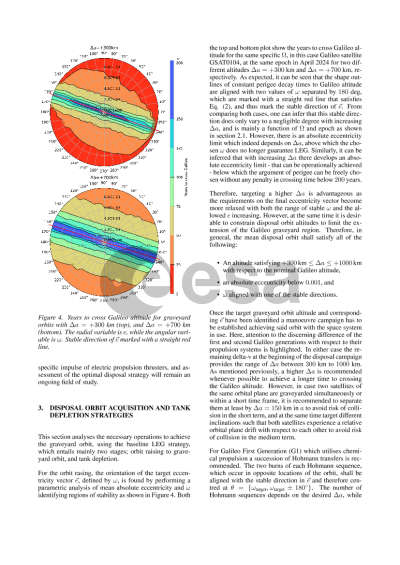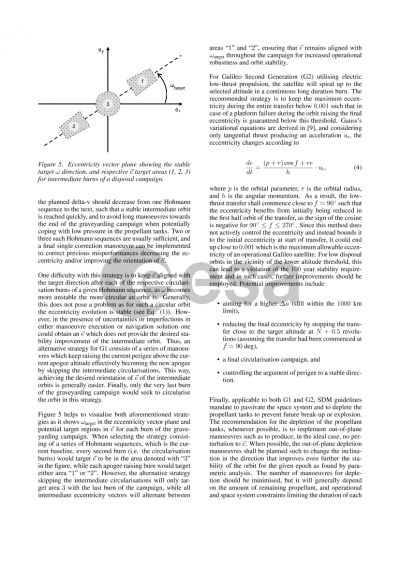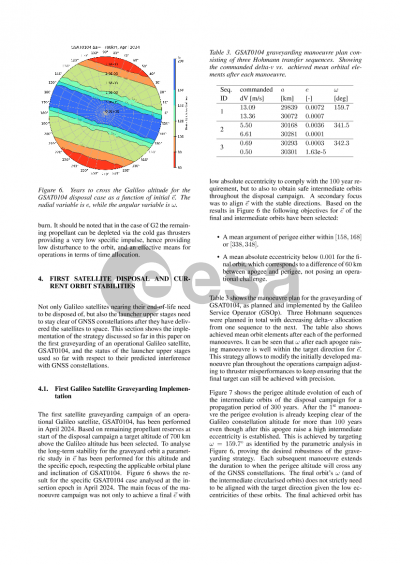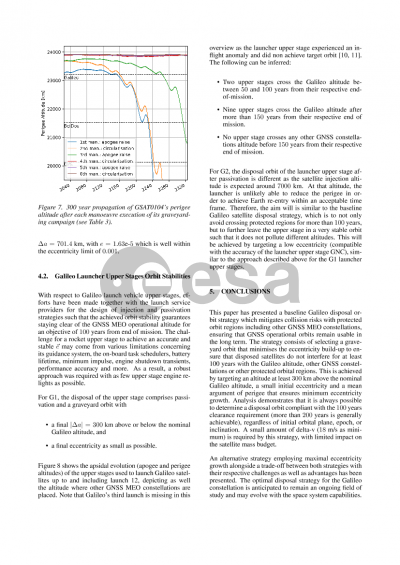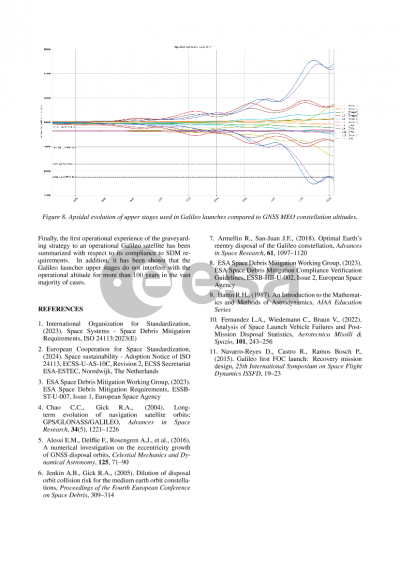Document details

Abstract
This paper presents the Galileo Constellation Disposal Orbit Strategy and its application to the disposal operations of the first Galileo operational satellite.
As a Medium Earth Orbit GNSS constellation serving as critical public infrastructure, a safe, robust and reliable disposal strategy is key to achieve several objectives:
• Long term exploitability of the constellation orbits
• Compliance with Space Debris regulations, in line with ESA’s “Zero Debris” strategy
• No orbital interference with other GNSS constellations
On this basis, ESA has developed a Disposal Orbit Strategy based on the usage of stable disposal orbits with minimum eccentricity growth. The strategy consists in transferring satellites at end-of-life to stable orbits located at least 300 km above the Galileo constellation. By optimising the eccentricity vector of such orbits, it is possible to achieve no crossing with the Galileo operational altitude for a long-time interval (typically hundreds of years).
The dependency on the initial orbit RAAN and inclination is presented. In addition, the operational implementation of such strategy (both with impulsive and low-thrust manoeuvres) and the problem of performing satellite tank depletion whilst minimising perturbations to the disposal orbit is addressed. Low eccentricity growth orbits are also used as disposal orbits for the Galileo launcher upper stages: this paper addresses the approach followed to achieve these orbits and the current status after thirteen Galileo launches.
An alternative satellite disposal strategy, outside the current baseline, is also analysed: by performing larger disposal manoeuvres (feasible with low-thrust propulsion), it is possible to target unstable orbits that maximize the eccentricity growth, such that an atmospheric re-entry can be achieved after around 100 years. A trade-off of this strategy against the baseline stable disposal orbit strategy is presented.
Finally, this paper describes the specific strategy adopted for the disposal of the first Galileo operational satellite: by making use of on-board propellant reserves, it has been possible to design and achieve a stable orbit 700 km above the Galileo constellation.
Preview
